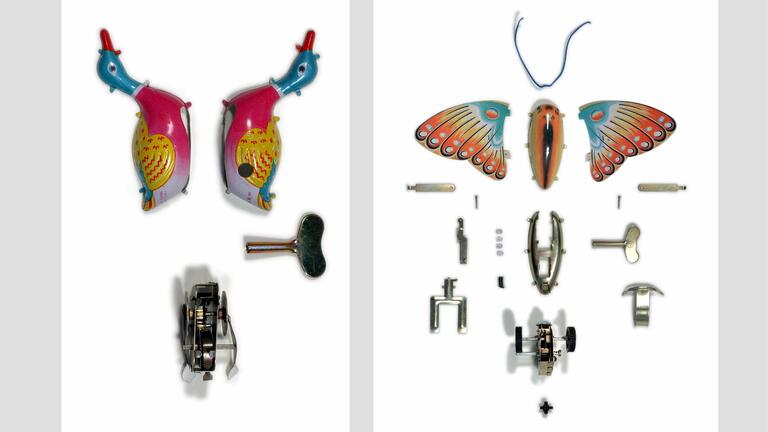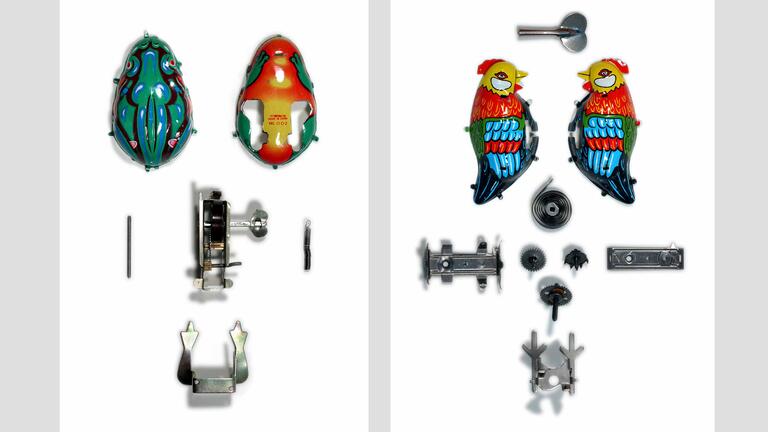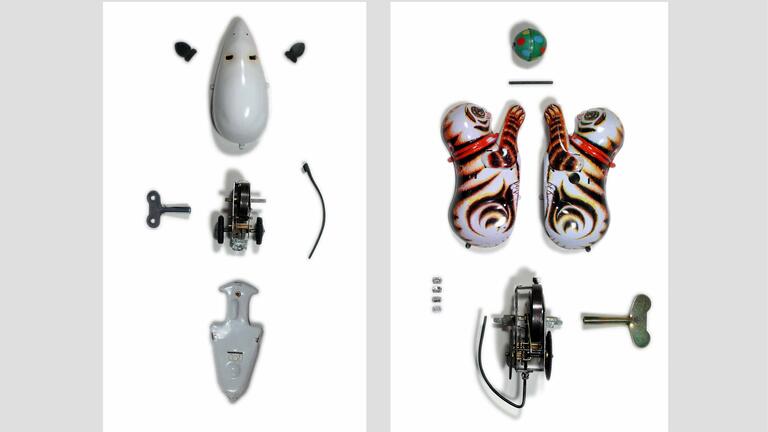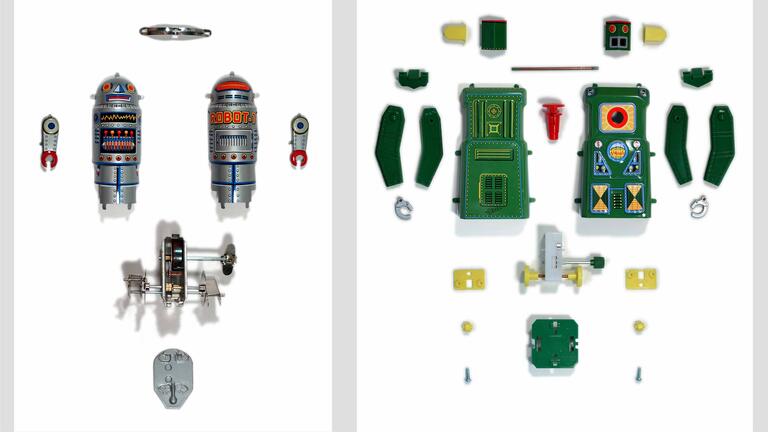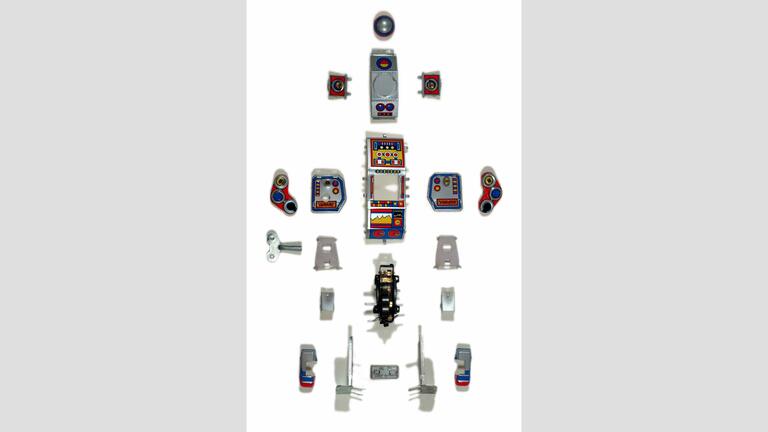Gail Wight
What life forms will survive the sixth extinction to repopulate this beautiful planet?
Artist Statement
In our seemingly boundless capacity for species self-love, we tend to simplify the living world around us, or fathom its depths solely for what it might teach us about ourselves. In Anatomies, I took a handful of classic metal children’s toys and disassembled them, arranging their mechanical parts into anatomical charts, the quintessential tool of Cartesian understanding. A few robots round out the menagerie, weary reminders of our automata fantasies. The individual names come from their packaging.
I continue to struggle between parts and wholes, between the intimate and breathtaking details of life and the staggeringly complex world they embody. I’m learning to make peace with the knowledge that I’ll never truly experience or even comprehend other ways of being in the world.
Engineering Insight
Gail Wight’s work brings to mind a child's natural inclination to break toys apart to understand how they work and what's inside. Indeed, it is through this sense of curiosity and wonder that children exhibit their natural engineering talents. It is through the process of breaking things apart and attempting to put them back together that the engineering mind is formed. What's more, the toys that Gail selected to represent are incredible toys from a by-gone era when everything was made to last a lifetime. The colors are vibrant and each mechanical piece is an engineering work of art in and of itself. These toys were more than likely handcrafted by mechanical artisans and Gail's genius has brought to light the incredible “anatomies” of these mechanical toys. What's more, the animals that are represented are veritable engineering feats of nature. The motion by which a butterfly or a bird flies through the air with grace and ease brings the fluid mechanical concepts of lift and drag into focus. Or the way a duck frantically moves its small webbed feet under water while giving the impression of calmly gliding across the water is yet another marvel of creation. Gail's selection of toys goes from those that represent the genius of nature to those that represent the intellect of humans, from animals to little robots. The robots that are pulled apart exhibit even more mechanical intricacy with additional pieces and further complexity, for such is the world of engineering — a world of creativity and ingenuity waiting to be explored.
—ELIZABETH MICKAILY-HUBER, PH.D., ADJUNCT PROFESSOR, DEPARTMENT OF ENGINEERING
Artist Biography
Gail Wight has taught in the Art Practice program at Stanford since 2003, focusing on experimental media. Working primarily in experimental photography, video, interactive media, and printmaking, Wight’s work examines the interplay between art and biology. Her exhibition record includes dozens of solo exhibitions throughout North America and Great Britain, and her work has been collected by numerous institutions including the Museum of Modern Art, Yale University, and Centro Andaluz de Arte Contemporáneo in Spain.
